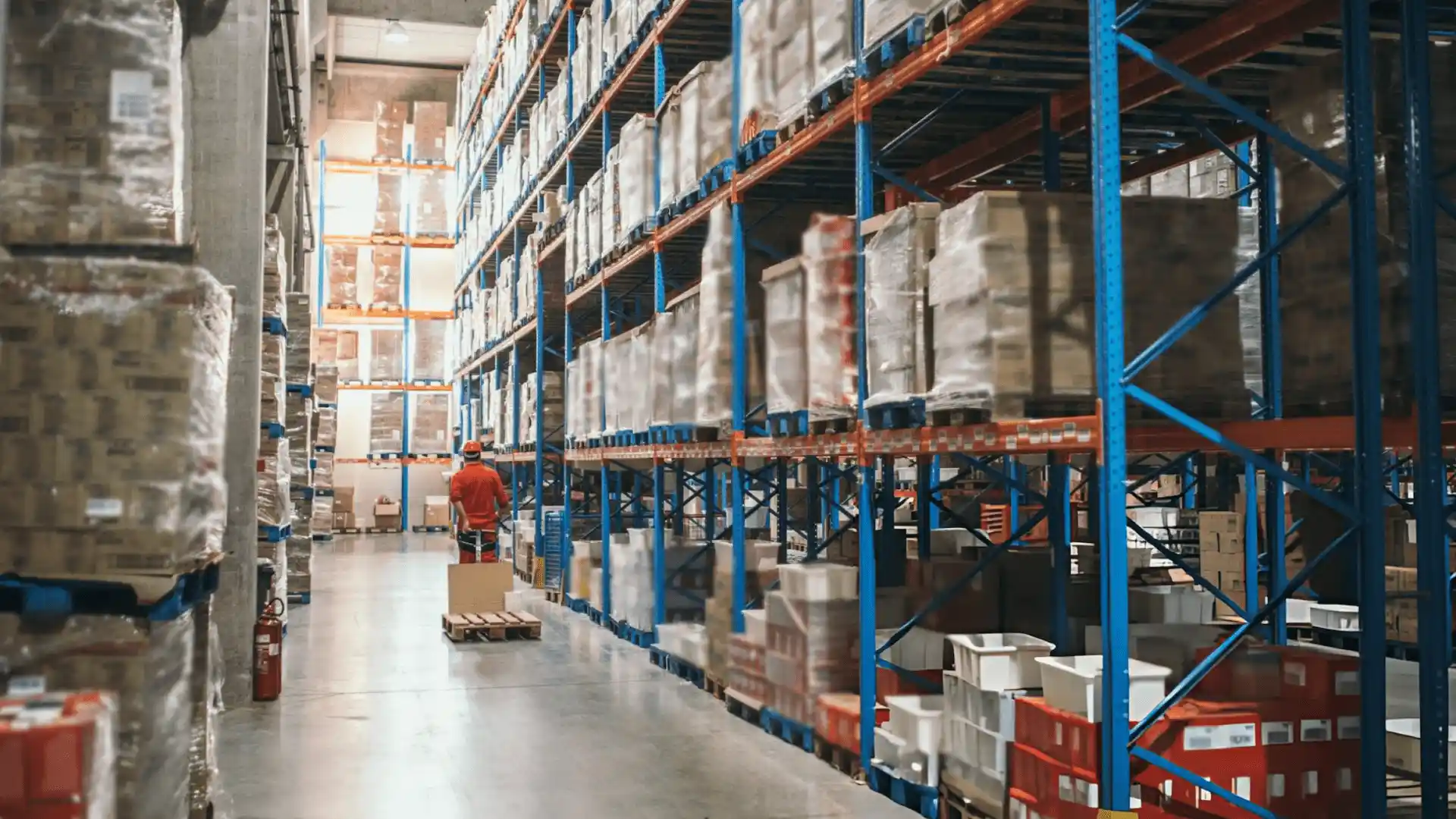The Importance of High-Quality Product Photography in E-Commerce: Tips and Best Practices

In the highly competitive world of e-commerce, first impressions matter. For online shoppers, product photography often serves as their first interaction with your brand. Without the ability to physically touch or inspect the product, customers rely on visuals to assess its quality, functionality, and style. High-quality product photography is, therefore, not just a luxury but a necessity in e-commerce.
Why High-Quality Product Photography Matters in E-Commerce
E-commerce photography is one of the most crucial aspects of online sales. It's the visual representation of your products that drives customer trust, communicates brand identity, and ultimately leads to conversions. Here's why product photography is essential for your e-commerce business:
1. Visual Appeal Drives Engagement
High-quality product images catch the eye of potential buyers, drawing them into the product page and increasing the likelihood of making a purchase. Studies show that people remember 80% of what they see but only 20% of what they read. Therefore, visually appealing product images are more likely to engage customers and create a lasting impression.
2. Boosting Sales with Professional Photography
Well-executed product photography has been shown to increase conversion rates significantly. When your product photos are clear, detailed, and professionally shot, shoppers feel more confident in making a purchase. Conversely, low-quality images can deter potential customers, leading to missed sales opportunities.
3. Building Customer Trust Through Consistent Imagery
Customers expect consistency across the products they view. High-resolution images that show every angle, detail, and feature of a product help build trust. This transparency reduces uncertainty and allows the buyer to feel confident that they are making an informed decision.
Best Practices for High-Quality Product Photography in E-Commerce
Achieving high-quality product photography doesn’t have to be overwhelming. With the right techniques and equipment, you can create stunning visuals that resonate with your audience and enhance your brand's credibility. Let’s explore the best practices that will elevate your product images.
1. Lighting Techniques for Clear and Engaging Photos
Lighting can make or break your product photography. Proper lighting ensures that your product is well-lit, highlighting important features without casting harsh shadows. Here are some essential lighting tips:
- Natural Light: For DIY product photography, natural light is your best friend. Position your product near a large window during the daytime for soft, even lighting.
- Softbox Lighting: If you’re shooting indoors or want more control over the light, softbox lights can help reduce shadows and provide a more professional finish.
- Avoid Harsh Direct Light: Direct sunlight or flash lighting can cause unwanted reflections and distortions. Instead, use diffused light for a softer effect.
2. Choosing the Right Background
The background of your product images should enhance the product, not distract from it. Here are some tips for selecting an ideal background:
- White Background: A clean, white background is often the best choice for product photos, especially for e-commerce websites. It keeps the focus on the product and makes editing easier.
- Contextual Background: For lifestyle shots, using a contextual background that shows the product in use can be highly effective in helping customers visualize how the product fits into their lives.
- Keep it Simple: Avoid busy or overly complex backgrounds that compete with the product for attention.
3. Image Optimization for Website Performance
Optimizing images is key to maintaining fast-loading product pages, which is critical for both user experience and SEO. Here are some steps for proper image optimization:
- Compression: Compress images without sacrificing too much quality. Tools like TinyPNG or Adobe Photoshop can help reduce file size while maintaining resolution.
- Image SEO: Use descriptive file names and alt tags to enhance image SEO. This improves your product’s visibility in search engines, driving more traffic to your site.
- Website Image Dimensions: Ensure that your images are properly sized for the web. Large images that are not optimized can slow down your site, negatively impacting both user experience and SEO rankings.
4. Product Styling: Enhancing the Look of Your Goods
Styling your products correctly can make a huge difference in how they’re perceived. A well-styled product photo highlights key features and evokes emotions that resonate with the buyer.
- Props and Accessories: If it suits your brand, consider adding props that complement the product and provide context. However, be careful not to overshadow the main item.
- Angles and Close-Ups: Show multiple angles of your product, including close-ups of unique features. This helps customers get a better understanding of the product’s texture, size, and details.
- Detail Enhancement: Make sure important elements like textures, logos, or intricate designs are prominently displayed and clearly visible.
5. Camera Selection and Photography Equipment
Investing in the right equipment can vastly improve the quality of your product photography. If professional photography services are not within your budget, here’s what you’ll need for a DIY setup:
- Camera: While professional DSLR cameras offer the highest quality, many smartphones today have powerful cameras capable of producing high-quality images. Just ensure your camera has a good resolution and the ability to adjust settings like ISO, aperture, and shutter speed.
- Tripod: A tripod is essential for keeping your camera steady and ensuring consistency across shots.
- Lighting Kit: As mentioned earlier, a softbox lighting kit can greatly improve the quality of your photos by eliminating harsh shadows.
6. Post-Processing and Photo Editing
Editing plays a critical role in enhancing product images before they go live on your e-commerce site. Here's how you can optimize your photos post-shoot:
- Color Correction: Ensure that the colors in your product photos match the actual product. Accurate colors build customer trust and reduce the chances of returns.
- Image Retouching: Use retouching tools to remove any dust, scratches, or imperfections from the product or background. This results in a clean, polished look.
- Detail Enhancement: Sharpen the image to bring out the fine details, especially for textures, patterns, and other intricate features.
- Consistency: Make sure your product images maintain a consistent look across your website. This includes uniform lighting, angles, and editing style for all your product shots.
Common Mistakes to Avoid in E-Commerce Product Photography
Even the best intentions can lead to mistakes in product photography. Here are some common pitfalls to watch out for:
- Low Resolution: Uploading low-resolution images will result in pixelation, which looks unprofessional and reduces customer confidence. Always opt for high-resolution images.
- Poor Lighting: As mentioned earlier, poor lighting can ruin an otherwise good product shot. Ensure your products are well-lit from all angles.
- Inconsistent Image Quality: Lack of consistency in image quality across your product pages can confuse customers. All images should have similar lighting, resolution, and backgrounds.
- Cluttered Backgrounds: Avoid using backgrounds that take attention away from the product. A clean, simple background is almost always better.
Photography Techniques for Beginners: DIY Product Photography
If hiring a professional photographer is out of your budget, you can still achieve great product photos with a few DIY techniques:
- Mobile Photography: Modern smartphones are equipped with powerful cameras that can capture high-quality images. Use manual settings to control exposure and focus for the best results.
- Lighting Hacks: If you don’t have access to professional lighting equipment, you can use household items like white bedsheets or foam boards to reflect and diffuse light.
- Editing Apps: You don’t need expensive software to edit your photos. Apps like Adobe Lightroom Mobile or Snapseed offer powerful editing tools for free.
The Role of High-Quality Product Images in Visual Content Marketing
Incorporating high-quality product photography into your broader content marketing strategy can have significant benefits. Here’s how:
- Social Media: Platforms like Instagram and Pinterest thrive on visual content. High-quality product images can help your brand stand out and attract more followers.
- Email Campaigns: Including professional product photos in your emails can increase open rates and drive more clicks to your site.
- Content-Rich Product Pages: High-quality visuals complement your written product descriptions and improve the overall customer experience on your site.
Conclusion
High-quality product photography is an essential part of any successful e-commerce business. By investing in professional images—or mastering the art of DIY photography—you can enhance your brand’s credibility, increase conversion rates, and build lasting customer trust. Remember, great product photography is more than just a picture; it’s a vital tool for driving online sales.
FAQs on High-Quality Product Photography in E-Commerce
Why is high-quality product photography important for e-commerce?
High-quality product photography is crucial in e-commerce because it directly influences customer perception and trust. Clear, detailed images help potential buyers visualize the product, which increases conversion rates and reduces returns. High-quality visuals also enhance your brand's professionalism and can boost your site’s search engine ranking through optimized image SEO.
How can I improve my product images for better sales?
To improve your product images and drive more sales, focus on proper lighting, use a clean or white background, and show multiple angles of the product. Ensure your images are high-resolution and optimized for faster loading. Post-processing tools can help enhance colors, remove imperfections, and improve overall image quality.
What are some best practices for e-commerce product photography?
Best practices for e-commerce photography include using soft, diffused lighting to reduce shadows, employing consistent backgrounds, and maintaining uniform image dimensions across all products. Using high-resolution images and adding descriptive alt tags for image SEO also plays a significant role in optimizing your product visuals for both user experience and search engines.
Can I take high-quality product photos with a smartphone?
Yes, many modern smartphones have advanced cameras capable of capturing high-quality product photos. For best results, use natural lighting or a softbox, stabilize your phone with a tripod, and ensure proper post-editing to adjust brightness, contrast, and sharpness. This is a cost-effective option for small businesses or those on a budget.
What are the common mistakes to avoid in product photography for e-commerce?
Common mistakes include using low-resolution images, poor lighting, inconsistent image quality, and cluttered backgrounds that distract from the product. Failing to optimize images for web performance can also slow down page load times, negatively impacting both SEO and user experience.

.svg)
.svg)
.svg)




